Death Valley National Park Closed Due to Unprecedented Rainfall, Storms, Flooding
This news story about the closing of Death Valley National Park due to flooding is based on two National Park Service press releases. You can read the original releases here and here.
After historic flooding in Yellowstone National Park, forest fires in Yosemite and many other weather-related events across the National Park System this summer, Death Valley National Park also had its own disaster this week.
On Friday, August 5, 2022, Death Valley National Park received “unprecedented amounts of rainfall,” which caused severe flooding in the park.
The rushing water trapped about 1,000 people within the park on Friday, including approximately 500 visitors and 500 staff, while numerous vehicles were partially buried and pushed into each other.
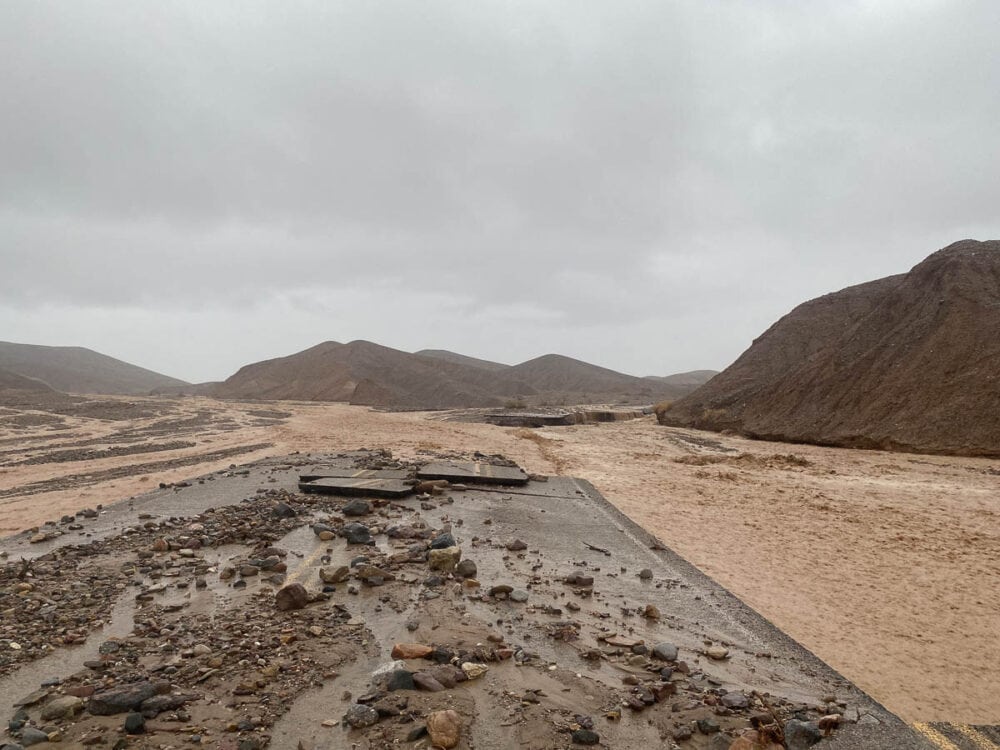
Unprecedented Rainfall and Flooding Forces Closure of Death Valley National Park
As a result of those floods caused by monsoonal rains, all roads leading in and out of Death Valley National Park are currently closed to all traffic. They “will remain closed until park staff can assess the extensiveness of the situation,” the National Park Service said.
Approximately sixty cars, belonging to both park staff and visitors, are buried in several feet of debris at the Inn at Death Valley.
The flood waters pushed dumpster containers into parked cars, which caused cars to collide into one another. Additionally, many facilities are flooded including hotel rooms and business offices.
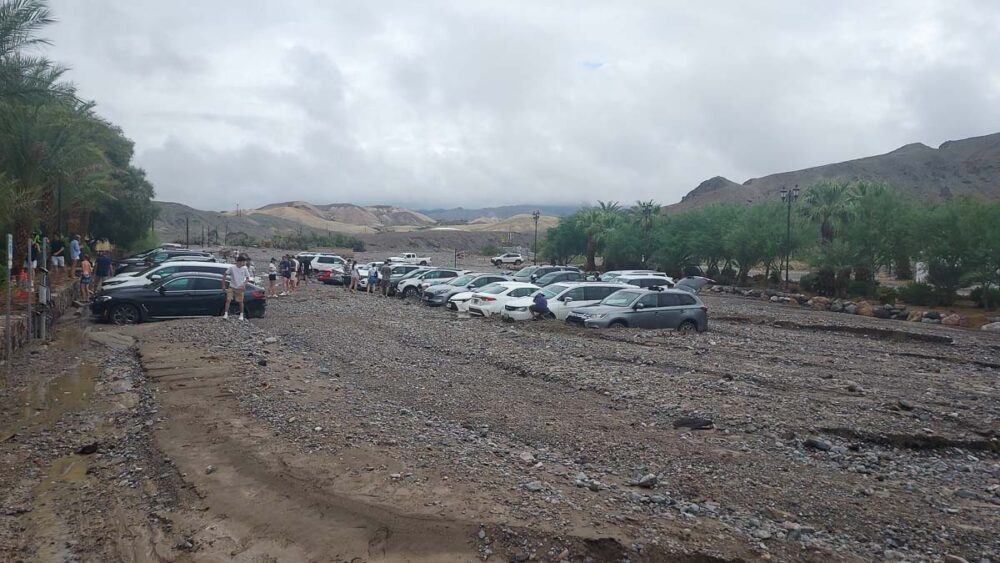
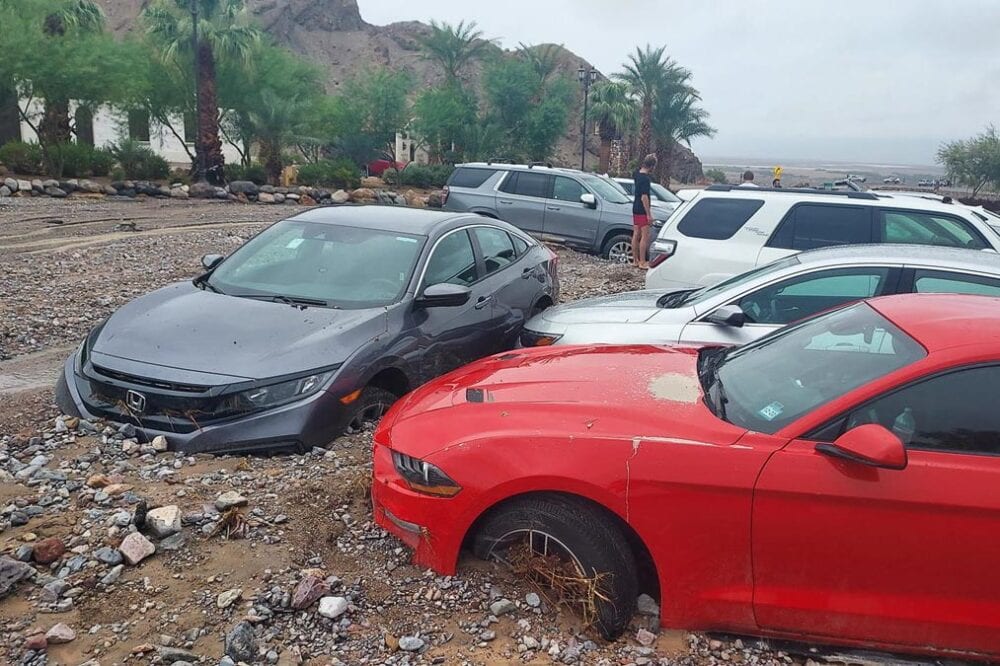
The Cow Creek Water system, which provides water to the Cow Creek area for park residents and offices, has failed. Park staff have identified a major break in the line due to the flooding which is being repaired. The remainder of the line is being inspected, the National Park Service said.
Death Valley Got Almost a Year’s Worth of Rainfall in One Day
The park received 1.46 inches of rain at Furnace Creek on Friday, which nearly matches the previous daily record of 1.47 inches. According to The Guardian, this was “nearly an entire year’s worth of rain in one morning.”
On Saturday, the roads in Death Valley National Park remained closed. However, the National Park Service reported that “hard work from road crews allowed visitors who were previously unable to leave the area hotels to be able to carefully drive out with law enforcement escorts.”
Additionally, Highway 190 is expected to reopen between Furnace Creek and Pahrump by Tuesday, the Park Service announced.
Aerial searches are underway to ensure that there are no stranded vehicles in remote areas of the park. California Highway Patrol flew a H82 helicopter on Friday. On Saturday, the Navy conducted an overflight with VX31 out of Naval Air Weapons Station China Lake.
At this time, there are no reported stranded visitors on park roadways and no reported injuries from this incident.
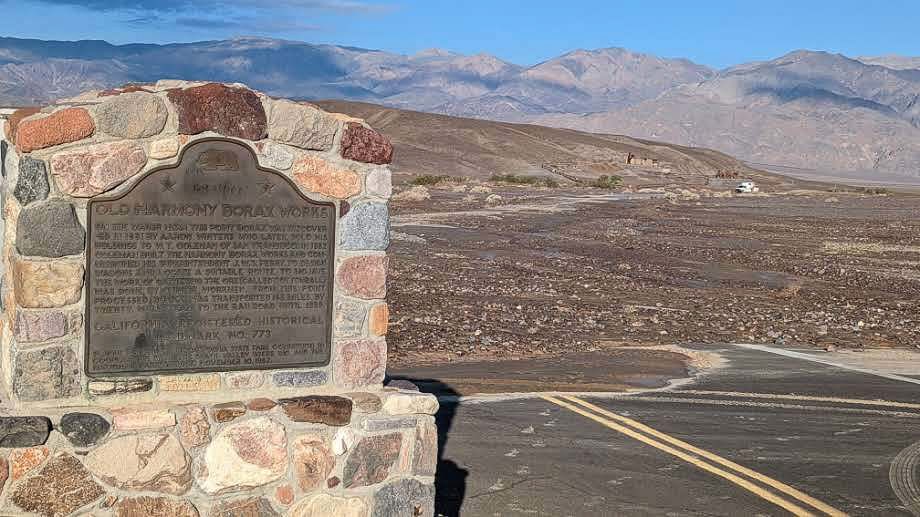
Conditions in Death Valley National Park After Extreme Rainfall
In most areas, water has receded, leaving behind extensive mud and gravel deposits. Although assessments are still being made, these are the current known conditions in Death Valley National Park:
- Highway 190: areas of undercutting, complete shoulder loss, and asphalt damage. About 20 palm trees fell into the roadway by the Inn at Furnace Creek. Debris flows in numerous areas, and floodwaters still over the road at Devils Cornfield as of this morning. California Department of Transportation crews are working hard to clear areas for travel, with estimates of a partial opening by Tuesday.
- Water damage to the NPS Emergency Operations Center building.
- Residential water lines in Cow Creek were blown out in multiple locations. Some water availability was returned to housing, but offices (including the Emergency Operations Center, maintenance buildings, and residential dorm) remain without water.
- Water damage to park staff residences
- Badwater Basin Road: large debris flows
- North Highway: asphalt damage
- Beatty Cutoff/Mud Canyon roads: major asphalt damage and undercutting
- Artists Drive: debris flows
- Titus Canyon Road: washouts
- Emigrant Canyon to Wildrose: debris on roadway
- Lower Wildrose Road: damage to roadway
- 20 Mule Team Canyon Road: washouts
- Salt Creek Road: flooding on roadway
- Cottonwood/Marble Road: extensive flooding
With over 1,000 miles of roadway in the park, and 3.4 million acres, this is not an exhaustive list and it will take time to get a full assessment of the damage.
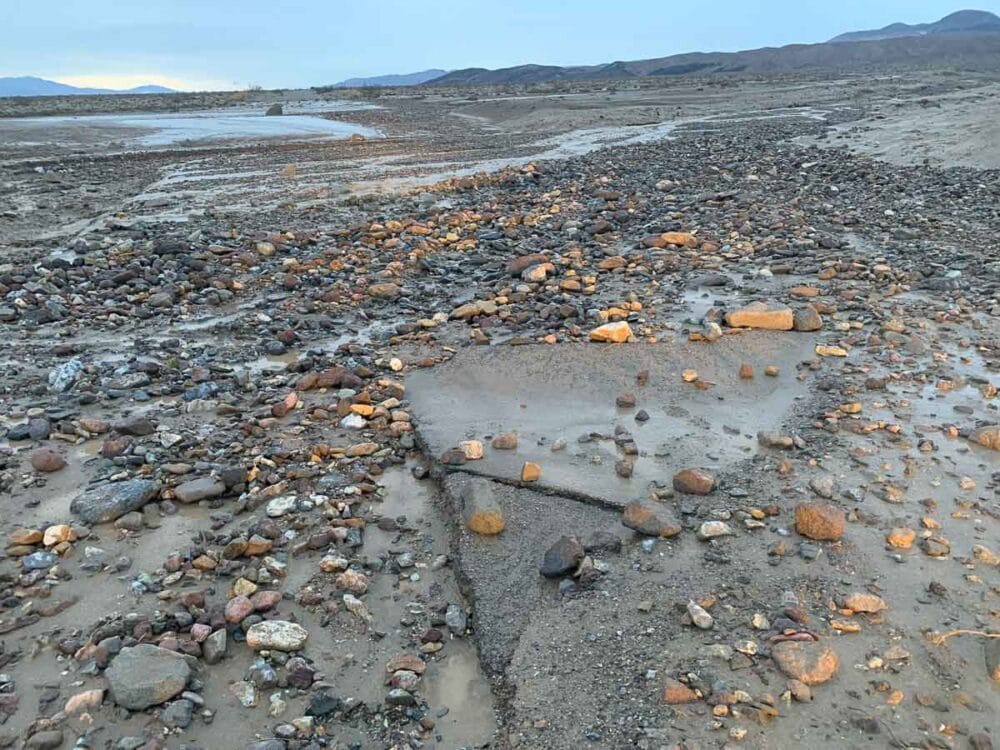
Due to access issues, there are currently no updates for many sections of the park, including Scotty’s Castle.
The National Park Service said they “are still working to assess damage, so this is not an exhaustive list. Park staff will post relevant updates to the park’s current conditions page and update information on social media via Facebook and Instagram.”
You can find more information about current conditions in Death Valley National Park here on the National Park Service website.
“I want to thank park staff , the California Department of Transportation, and other partners who are working hard to reopen major roads for travel and manage this incident,” said park superintendent Mike Reynolds. “With the severity and wide-spread nature of this rainfall it will take time to rebuild and reopen everything, and we appreciate your support and patience as we continue this work.”







